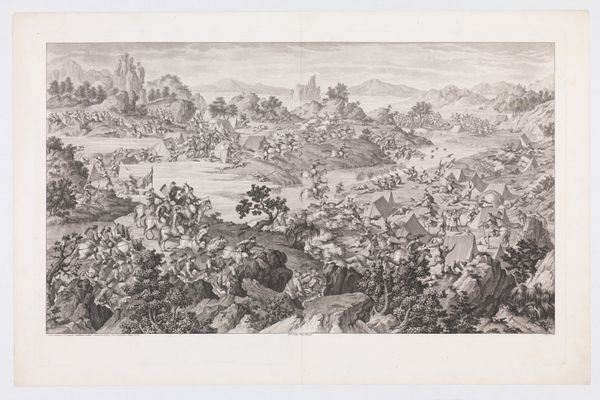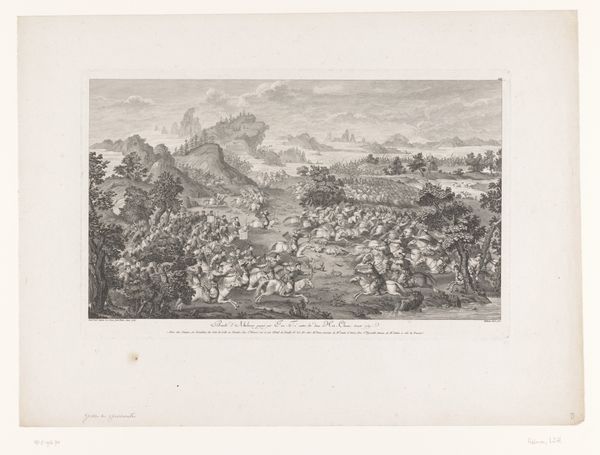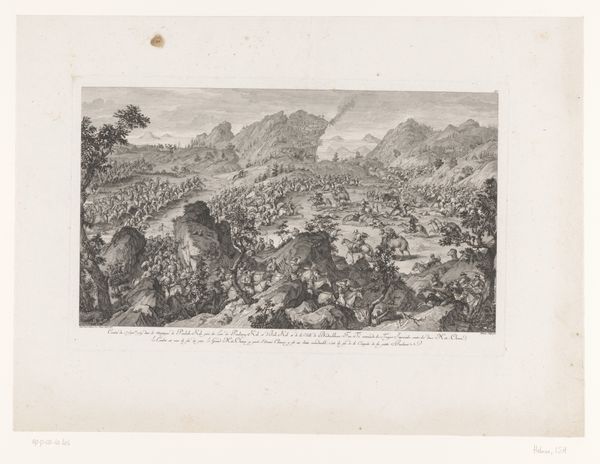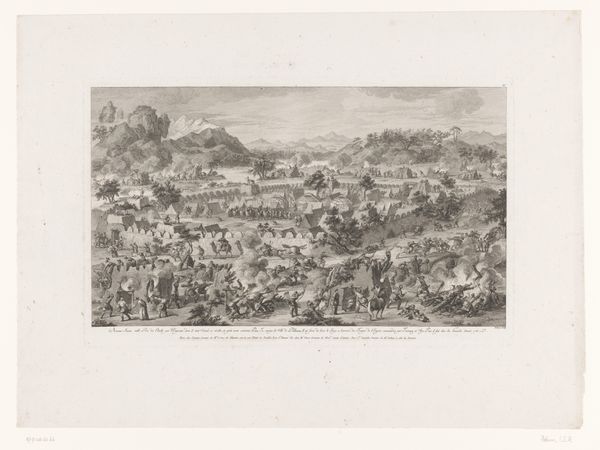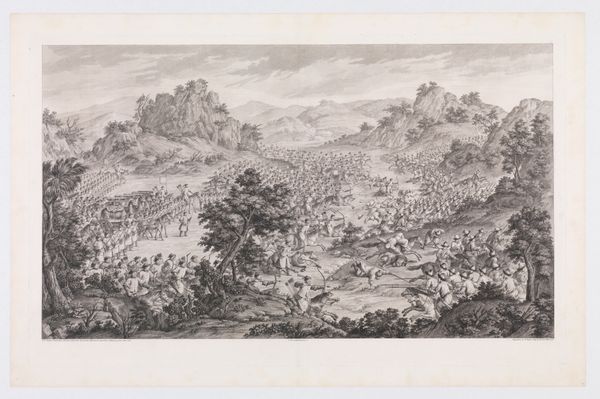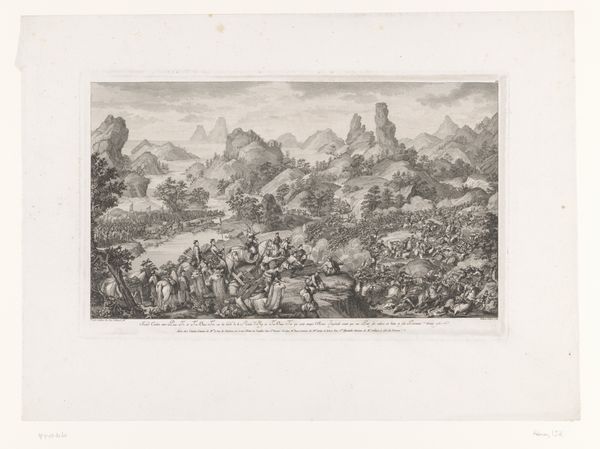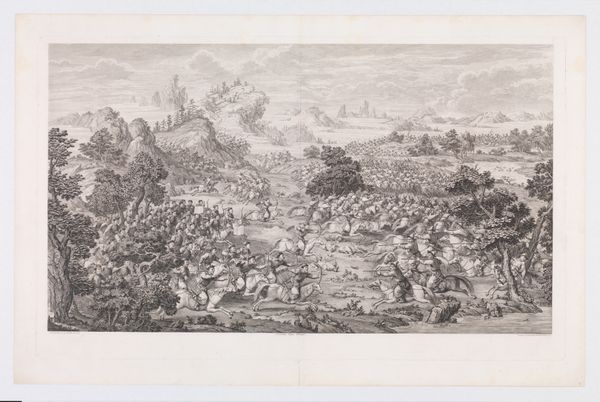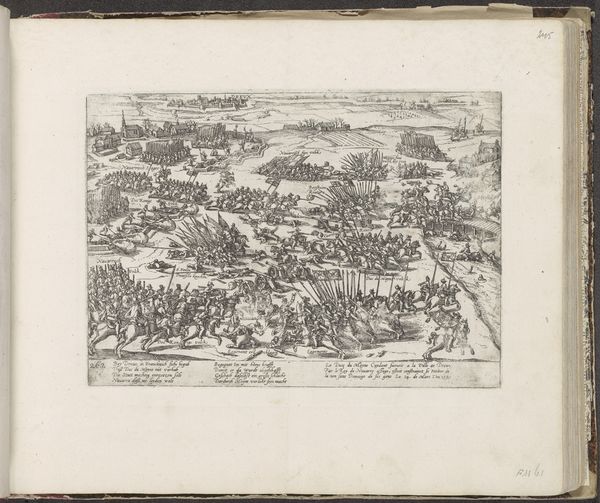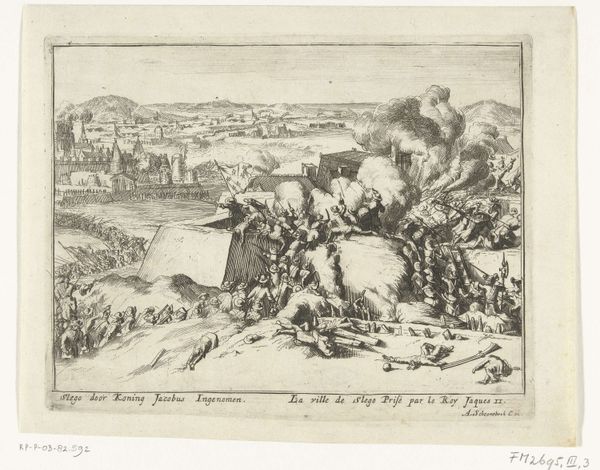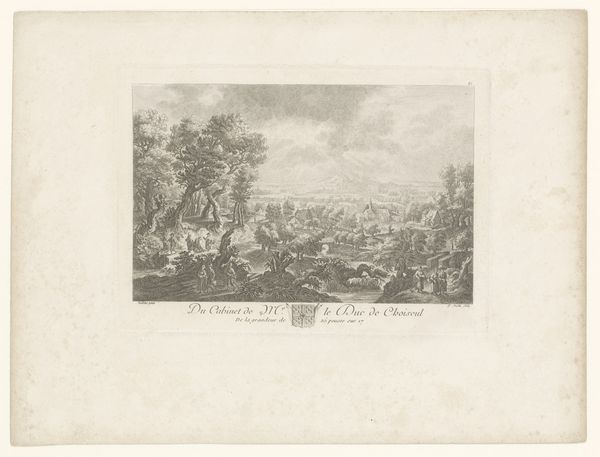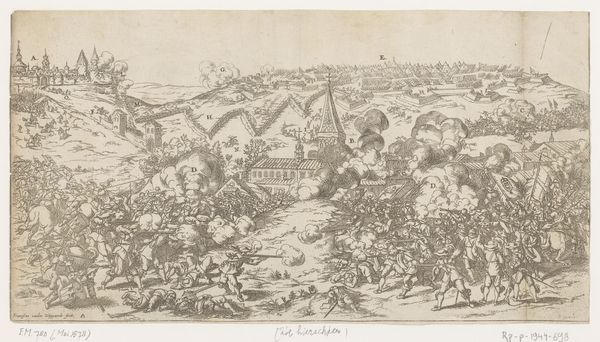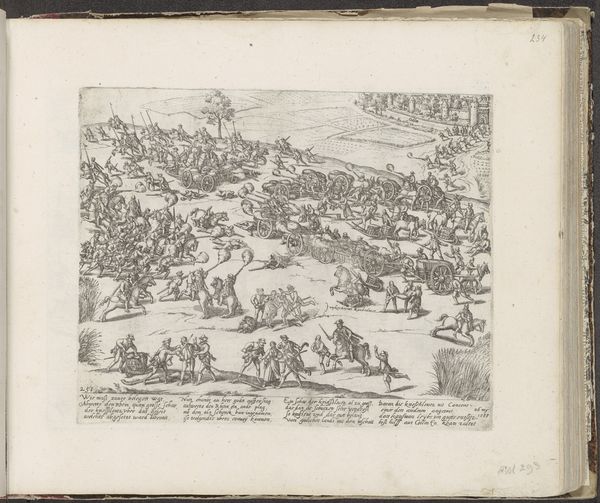
Aanval van het keizerlijke leger onder leiding van Pan-Ti op het leger van Dawaci 1784
0:00
0:00
print, engraving
#
neoclacissism
#
narrative-art
# print
#
landscape
#
history-painting
#
engraving
Dimensions: height 272 mm, width 435 mm
Copyright: Rijks Museum: Open Domain
Curator: Welcome to the Rijksmuseum. Here, we see Isidore-Stanislas Helman's 1784 engraving, "Aanval van het keizerlijke leger onder leiding van Pan-Ti op het leger van Dawaci"—"Attack of the imperial army under the command of Pan-Ti on the army of Dawaci." Editor: Immediately striking! The sheer density of detail overwhelms me; a chaotic panorama meticulously rendered in monochrome. It's difficult to discern individual forms at first glance. Curator: Precisely. Helman's print relies on Neoclassical principles applied to document a historical event. Look closely; the linear precision aims to convey an objective record of battle, emphasizing the scale and order of imperial military might. Editor: Scale, yes, but what does this visual rhetoric of imperial triumph truly convey? These depictions were, inevitably, propaganda serving specific colonial agendas. Who were Pan-Ti and Dawaci, and what does this portrayal mask about the true impact of this conflict on the conquered people? Curator: Pan-Ti was a commander during the Qing dynasty’s military campaigns in Central Asia. These prints were commissioned to illustrate the Qianlong Emperor's military successes, intended for distribution among the European elite. The choice of engraving, a medium easily reproduced and disseminated, speaks to the political utility of this work. Editor: Dissemination as a key to solidifying dominance. This was made for European consumption. And its success depended not just on distribution but on how this clash of armies, cultures, empires would play with the European intellectual elite and aristocracy. Is it then possible to view this engraving as merely a raw, documentary artefact free of bias? The materiality reflects a wider system of power. Curator: And it’s precisely through understanding that materiality and its production context that we see beyond a simple historical depiction to understand cultural exchange, power dynamics, and artistic production. Note the fine lines, achieved through skilled labor and specific tools and materials... it is no small feat. Editor: I find the composition quite telling as well. It subtly celebrates a specific ideology, it normalizes cultural imperialism in distant lands. It asks for the blessing of the global stage for more conquest. How do we contend with that today? Curator: By examining these historical artworks critically. Analyzing its creation, context, and function reveals layers of meaning beyond the surface image. Editor: Right, and this dialogue—this unveiling of context—enables us to challenge the singular narrative it presents, and acknowledge its place within a broader, complex web of power and resistance. Curator: Indeed, looking at art as a product shaped by materials and intentions leads us to richer interpretations of history. Editor: Exactly, a journey toward awareness beyond aesthetics.
Comments
No comments
Be the first to comment and join the conversation on the ultimate creative platform.
